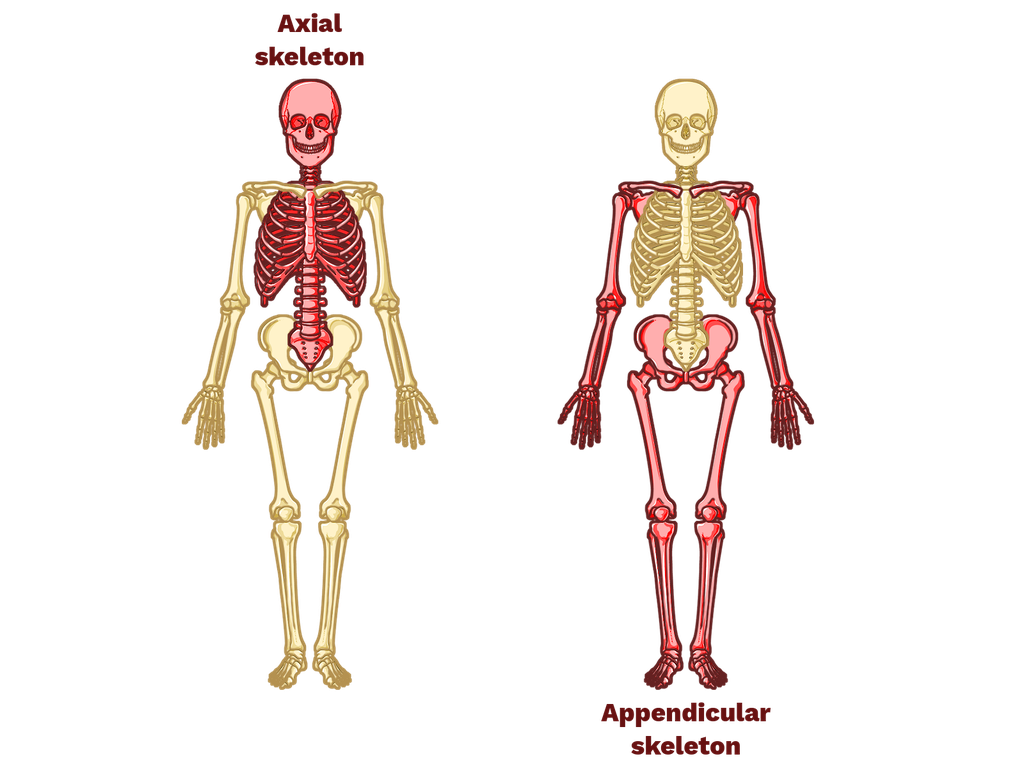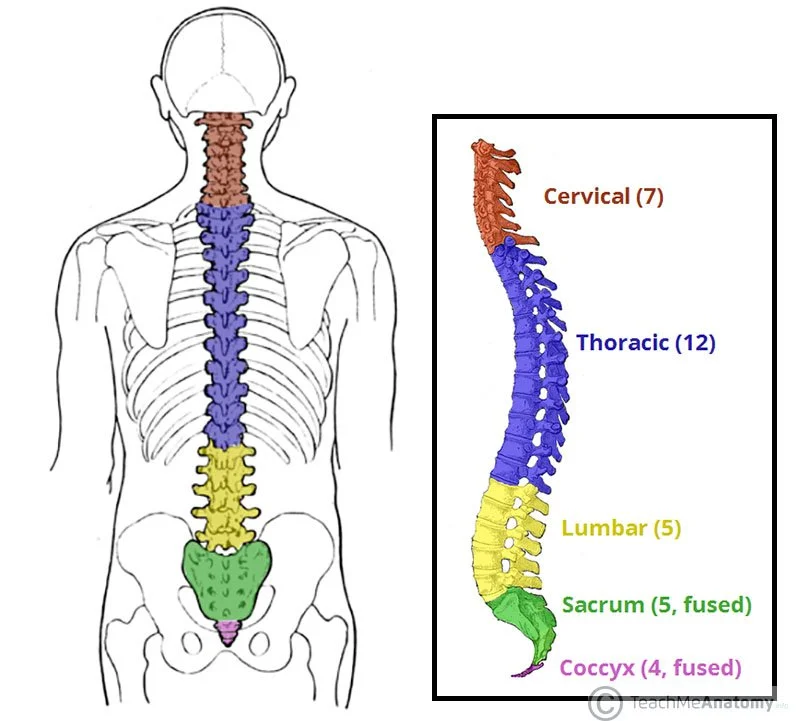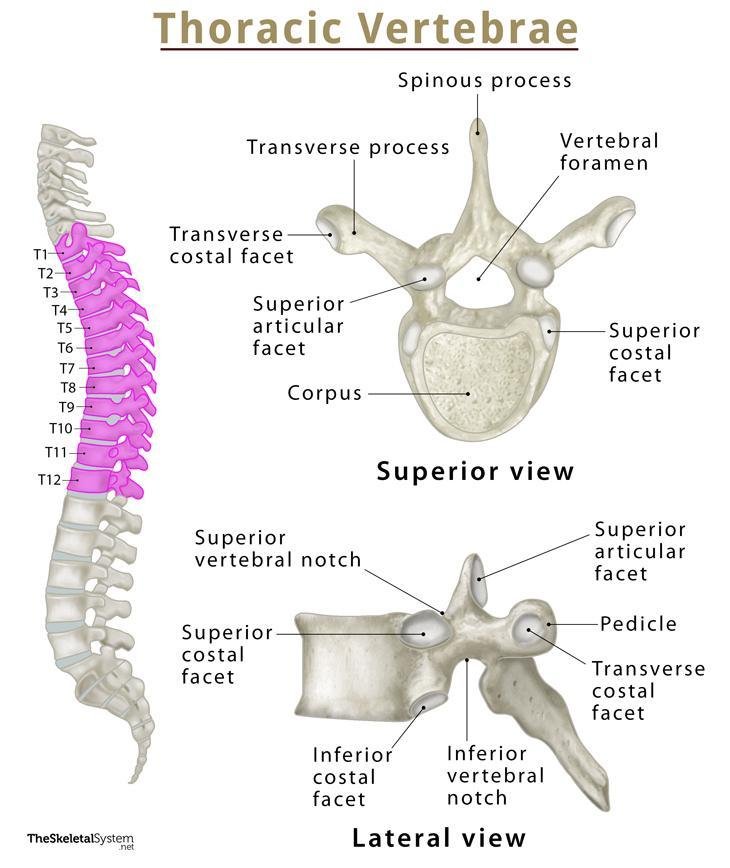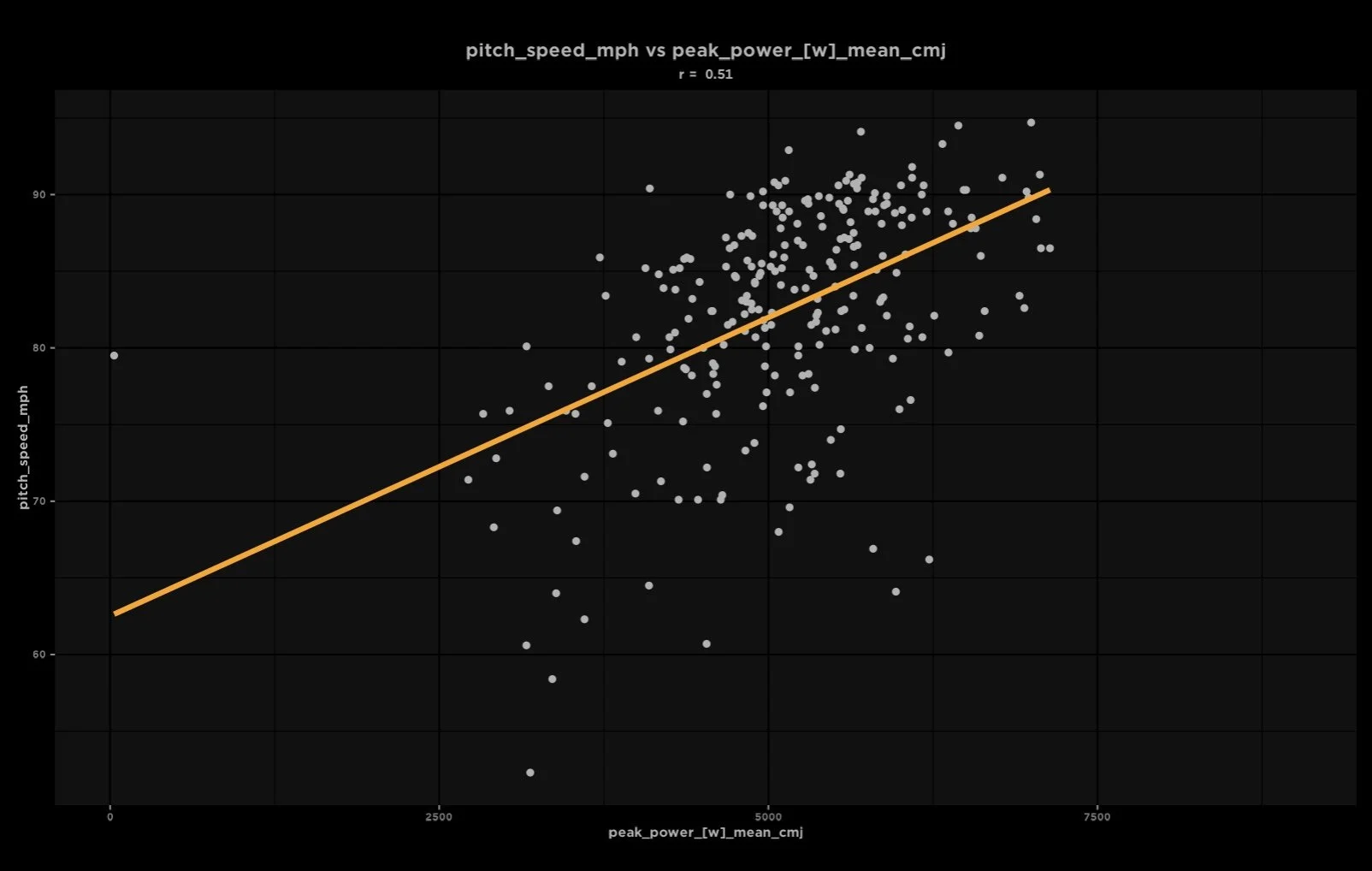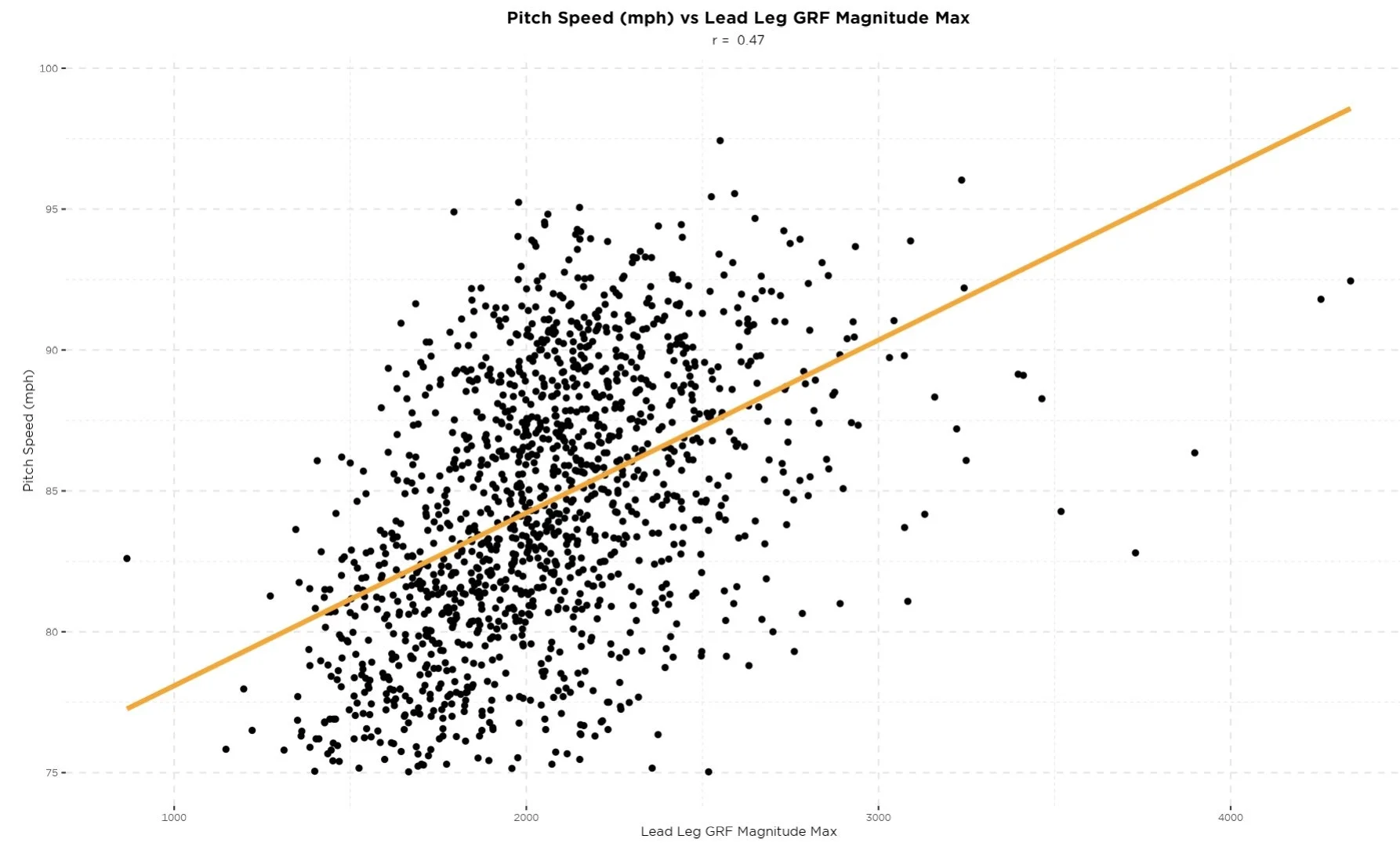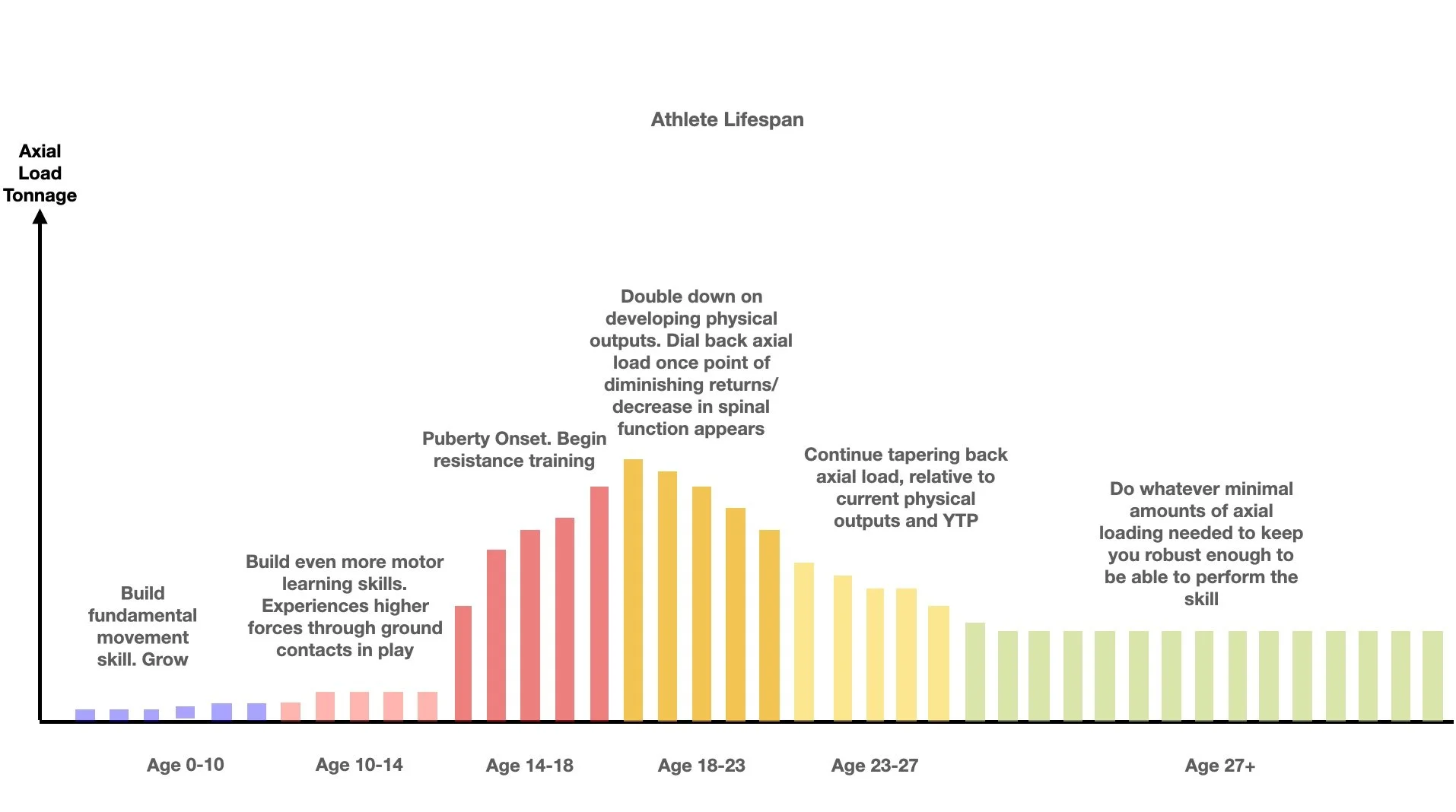Spinal Engine Theory and Periodization of Axial Load for the Throwing Athlete
A hot topic in the sports performance realm lately is the Spinal Engine Theory . This is the idea that the spine is the main engine of human locomotion, rather than just acting as a support structure. Keeping this in mind, it is important for an athletes General Physical Preparation (GPP) to build as many positive adaptations as possible, while minimizing maladaptations in respect to the skill.
Part 1: Structure
Defining Axial Load
Using a blend of anatomical and physics terms, we can define axial load as the application of compressive force along the longitudinal axis of the skeleton - primarily the axial skeleton. The goal with any high axial load general training modality is to train the force production capabilities of the active tissues surrounding the axial skeleton, while simultaneously building the capacity to tolerate levels of axial load that will be experienced in sport due to high speed ground reaction forces.
As with any other biological input, it’s clear that the dose and timing make the poison.
The Anatomy of the Spine
The human spine is comprised of 24 unfused/articulating vertebrae (7 cervical, 12 thoracic, 5 lumbar) and 9 fused vertebrae (5 sacrum, 4 coccyx).
The thoracic spine and sacrum have a natural posterior curvature titled kyphosis, which is mainly a primary spinal curve (meaning it’s present at birth). The cervical and lumbar spine display a slight anterior curve called lordosis, which is mostly a secondary spinal curvature that begins to significantly develop once a child begins walking upright.
The Thoracic Vertebrae
The 12 thoracic vertebrae are significant because they articulate with the 12 ribs to form the thorax.
There are two main articular processes that the thoracic vertebrae use to create energy and transfer it to the thorax:
Intervertebral Articulations - the relative motion between a vertebrae, and the vertebrae positioned above and below it.
Vertebral-Costal Articulations - The relationship between the superior and inferior vertebrae and the rib that they share (costal means in relation to the ribs).
There’s a few key terms to know when it comes to the thoracic vertebrae:
Inferior and Superior Costal Facets - This is where the head of the rib “plugs” in to the superior and inferior costal facets of the two vertebrae it articulates with.
Tranverse Costal Facet - Located on the tranverse process of the thoracic vertebrae, this is where the articular facet of the costal tubercle interacts with the vertebrae. Unlike the inferior and superior costal facets, this is a vertebral-costal articulation that is limited to the superior vertebrae only.
Due to being more distal , it plays a big role in deforming the rib/ribcage position as the Thoracic spine flexes, extends, and rotates
Superior and Inferior Articular Processes - Located on the posterior of the vertebrae, this is where the vertebrae positioned above and below interact with each other, forming the zygapophysial joints. The orientation of these on the thoracic vertebrae is also important, as they are much less sagitally oriented than the lumbar spine, allowing for significantly more rotation and lateral flexion.
A visual of the Zygopophysial joint
Another important feature to take note of is the shape and size of the vertebral body (corpus). As you move up the spine, the circumference of the vertebral bodies decrease consistently, allowing for efficient energy transfer, much like the structure and function of a whip.
Here are two great short videos from Kevin Tohoph on the structure and function of the ribs and thoracic vertebrae. Watch them.
Costal Facets, Demifacets, and Rib-Vertebral Articulations
Rib Movement Coupled with Lateral Flexion & Rotation
I know this is a lot of information on the ribs -we’ll get to why soon.
Part 2 : Function
When it comes to the realm of energy transfer in the throw, there are two main camps.
Middle-Out: Energy is created via the spinal engine, and amplified distally by the limbs
Ground-Up: Energy is created via ground reaction forces, and transferred up the kinetic chain, using the spine as a way to bridge the gap between the upper and lower halves
How important is the general ability to produce ground reaction forces?
It’s important! Countermovement Jump (CMJ) Peak Power is a moderately positive correlator to pitch speed (CMJ and Squat Jump Peak Power are our highest general force plate output correlators to pitch speed!). Here’s a graph of the relationship between CMJ Peak Power and Pitch Speed in a dataset of college and professional pitchers.
How important is the ability to produce ground reaction forces in the skill?
Its also important! Lead Leg GRF Magnitude in the pitching delivery is a moderately positive correlator to pitch speed. The graph below shows the relationship between Lead Leg GRF and Pitch Speed in a dataset of college and professional pitchers.
To be clear, ground reaction forces created by the lead leg are not only important in their magnitude, but also in the their timing. Here’s a cool data visual from Kyle Wasserberger that shows exactly this.
I think that the truth lies in a combination of both Ground-Up and Middle-Out ! But my main belief is that ground reaction forces (when it comes to the lower half and the block) mainly serve as a stable reference point from which the spinal engine can work from!
Heres a look at some research from Wasserberger that supports this idea as well.
This intrinsically makes sense when you think about it! The spinal engine may be a main creator of energy that is amplified distally, but it still needs a stable reference point (the earth, via the pelvis and legs) to move from. This is where ground reaction forces come in to play.
In short, the theory would go as such:
Properly timed and directed ground reaction forces help the pelvis create a stable reference point.
The spinal engine converts potential to kinetic energy through segmentation, while transferring the GRF energy up the chain as well.
That energy is amplified distally up the chain (spine to ribcage to scapula to shoulder to elbow to hand).
Here’s where some of the anatomical knowledge from earlier comes into play. Throwers need the structural room for not only the vertebrae of the thoracic spine to segment through articulation at the superior and inferior articular processes, but also room to move at the next step of the sequence - the ribcage.
In order to segment three dimensionally, the ribcage needs to be able to change shape and segment all the way from ribs 10-1 (reminder, the bottom two ribs are floating) . The necessity of this is for two specific reasons:
If the ribcage can not deform both frontally (by compressing one side and expanding the other) and sagittally (compressing front to back and vice versa as the thoracic spine flexes and extends) through costal-vertebral articulations, it will become a limiter for the spinal engine instead.
If the ribcage cannot deform, it will be unable to let the scapula, the next piece of the chain, transfer the energy smoothly. The interior surface of the scapula is naturally convex (rounded), and it needs a rounded ribcage to move smoothly on as it protracts and upwardly rotates.
So not only do we need a spine that can segment sequentially in order to create and transfer energy, but we also need a ribcage that can deform to allow this motion and transfer to happen.
A look at the lateral deformation of the ribcage from a top down perspective, relative to a set pelvis.
Part 3: Training Implications
The goal of GPP is to build as many positive adaptations as possible, while minimizing maladaptations in respect to the skill. So when designing a training plan, consider that not all adaptations are created equal in respect to the skill.
An interesting case study of this is in the force plate data of legendary powerlifter Chris Duffin. Chris is one of the greatest strength sport athletes of all time, and is one of the few men to squat and pull 1000+ pounds for reps.
I got to work with Chris in the lab at Driveline, and got a chance to test him on the Isometric Mid-Thigh Pull, our test for lower body absolute strength. As a disclaimer, when he tested he had taken quite a few months off of heavy powerlifting training, and it was his first time performing the IMTP. Nevertheless, here’s a look at both Chris and I performing the Isometric Mid Thigh Pull, and the resultant Net Peak Force outputs (compared to a dataset average of 90+ mph pitchers).
Interestingly, I’ve had slightly higher force outputs than Chris! Of course, I think if you gave him a few training blocks to dial back in and some more experience with the IMTP, he’d beat me for sure, but it’s incredible that we’re even in the same ballpark.
Does this mean that I’m stronger than Chris? Probably not, depending on what you define strength as. My hypothesis is that although Chris has incredible levels of muscular strength and neural drive, the reason why he’s able to compress himself enough to move Herculean amounts of weight is that he’s made directly opposite adaptations at the spine and ribcage to those discussed earlier.
Through years of heavy axial loading, he’s essentially managed to turn his ribcage into a solid cylinder capable of withstanding insane amounts of compressive forces. For him, this is a beneficial adaptation, whereas for a thrower it would be considered a maladaptation.
To be clear, there’s still overlap between some of the goals of Chris’s training and that of a thrower - high levels of force output. It’s just that the application is a bit different, relative to the specific skill.
Training General Spinal Capacity for Throwers
When training the ability to segment the spine generally, or really mobility at any joint complex, the meat and potatoes will always be high stimulus training through as full of a range of motion as possible. Blend that with some relatively more passive work that allows you to relax into extreme ranges, and you’re in business.
You’ll see a lot of this smooth, relaxed displays of energy transfer in other sports and training disciplines as well. Here’s a look at prime Conor McGregor talking about the importance of this in his training.
When it comes to more passive, relaxation based spinal prep work, here’s a basic checklist you can go through:
Use ELDOAs or other spinal decompression methods to create some space between the vertebrae.
Use this increased space to help move into in end range flexion and extension, training the inferior and superior articular processes of the vertebrae to segment smoothly in the sagittal plane.
Use this gain in segmental range to train separation between the pelvis and ribcage through rotation and lateral flexion.
Bear in mind that these are just general spinal preparation recommendations, aimed to improve your structural capacity for segmentation. The best, and most specific way to improve your spinal function in the throw is by throwing.
Periodizing Axial Load
When analyzing the periodization of any training stimulus, there are two main lenses to look through. Periodization throughout the Yearly Training Plan (YTP) and periodization throughout the athletes life cycle. A few rules apply to both:
Apply the minimum amount of heavy axial loading necessary to build both robust and skillful athletes.
Remember that any GPP work serves as a support system to the execution of the skill. The goal is not necessarily to be “strong” in the weight room, but rather to use GPP to increase the amount of force the athlete can express in their skill.
Periodizing Axial Load Throughout the Athlete Life Cycle
The application of axial load throughout the athlete life cycle should always be relative to developmental periods, and to previous training adaptations. A 17 year old going from 135 to 250 on a well executed back squat, if trained at reasonably low volumes, is a worthwhile investment and likely will not be a cause of any maladaptations. A 23 year old thrower exhausting significant amounts of training economy trying to move his trap bar deadlift from 600 to 650 is most likely doing himself a disservice.
Remember, the most important metric to relate all physical outputs to is the ability to continually progress in your development of the skill. Everything else is tertiary. If you’re not progressing, it’s time to make adjustments.
A theoretical progression of axial load through the athlete lifespan.
Periodizing Axial Load Throughout the YTP
In the yearly training plan of a competitive thrower, the goal is to maximize performance outputs at the right times. Some amounts of axial load can be useful to build robustness and chase high force outputs in resistance training, and then should be tapered to allow for higher volumes and intensities of skill expression. Again, the amount applied should be relative to the athletes current low hanging fruit in both capacity and skill.
A theoretical progression of axial load through the YTP.
Final Considerations
Tapering axial tonnage does not mean you don’t train the capacity for high force outputs. Rather, it means you train high ground reaction forces through lower body ballistic and plyometric work, and choose heavy resistance training modalities that reduce axial load while still applying high amounts of mechanical load to the active tissues.
Two of my favorite heavier lower body exercise selections that minimize axial load are the Leg Press and the Belt Squat.
Avoid exercise selections that maximize axial compression while doing a poor job of actually delivering mechanical tension to the active tissues through a solid range of motion. The juice isn’t worth the squeeze.
An example of a high axial load, low stimulus return exercise selection.
Thank you very much for reading.
Happy Hunting.
References-
Fig 1- https://theory.labster.com/regions/
Fig 2 - https://longhornbrainandspine.com/anatomy-of-the-spine/
Fig 3 and 4- https://www.theskeletalsystem.net/spine-vertebral-column/thoracic-vertebrae.html
Rib and Spine Youtube explainers- Kevin Tophoh, DPT
All force plate and motion capture data- Driveline Baseball
